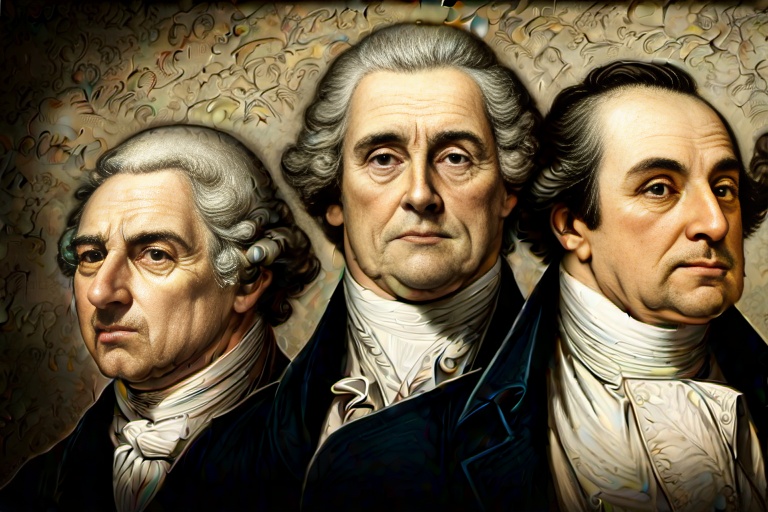Coin collecting is more than just a hobby—it's a gateway to the past, and each coin tells a story. Whether you are an experienced numismatist or someone just embarking on this captivating pastime, charting a course through the world of coinage will enrich your knowledge and might just provide financial rewards.
Coin collecting is more than just a hobby—it's a gateway to the past, and each coin tells a story. Whether you are an experienced numismatist or someone just embarking on this captivating pastime, charting a course through the world of coinage will enrich your knowledge and might just provide financial rewards.
Starting Your Coin Collection
For beginners wondering where to begin, take a look at your spare change. Often, the first pieces of a burgeoning collection lie scattered around our homes. Coins that seem mundane at first glance may actually kickstart your numismatic journey. This first foray into collecting is an opportunity to learn the language of the trade, underscoring the importance of familiarizing oneself with terms such as obverse, reverse, mint mark, and denomination.
Deciding on a Coin Collecting Theme
Your collection may evolve based on themes that pique your interest. Conceiving a focus for your collection could revolve around various criteria:
- By Country: Concentrate on coins from regions or countries that intrigue you.
- Historical Era: Assemble coins from specific epochs in time.
- Finish Type: Pursue coins with particular finishes like proof or uncirculated.
- Denomination: Build a collection around certain coin values, such as dimes or half-dollars.
- Mint Marks: Seek out coins from various mints, each with its unique characteristics.
- Design Motifs: Choose coins with designs or themes that resonate with you.
- Artistry: Amass coins by distinct engravers or artists.
Looking for cohesive sets? Many collectors turn to annual sets from the Mint, which often fit neatly into pre-established themes. These can include uncirculated, proof, and special quarter sets.
The Intrigue of Error Coins
Explore the niche of error coins, where the Mint's miscalculations lead to anomalies like clipped planchets, multiple strikes, and overstrikes. While most never reach the public, the ones that do capture the fervent attention of collectors. Resources are available for those eager to understand these peculiarities, such as numismatic publications and organizations.
Assessing and Adding Coins to Your Collection
When contemplating the addition of a new coin, consider its visual appeal—factors such as luster and condition are immutable. Examine the coin for scratches, bag marks, corrosion, or other detractors that might lessen its value. The wear on a coin is often a significant determinant in its overall grade and therefore its worth.
Unable to locate certain coins? Consider engaging with banks—they might offer access to coin rolls ripe for discovery. Coin clubs and online forums provide platforms for trade, learning, and purchase. Collectors often gain from seeking recommendations for reputable dealers from those more seasoned in the field. National and local coin shows, as well as auctions, can yield rare finds and invaluable acquisitions for any collection.
Coins and Their Value
Let's delve into the multifaceted process of procuring coins. Modern technology affords collectors the comfort of acquiring coins via online marketplaces and auctions. Despite the ease of access, it's paramount to do due diligence: scrutinize the seller's credibility, understand the terms for returns, and authenticate the listed coin's condition and rarity. Popular websites like eBay, Heritage Auctions, and GreatCollections showcase an array of coins for collectors to peruse and purchase.
Venturing beyond the digital realm, flea markets and antique shows can provide rare opportunities. However, caution is advised—prices can be subjective, and the risk of encountering 'problem coins’—those with defects affecting value—is real. Verify any potential purchase with scrutiny and an informed eye.
The Sheldon Coin Grading Scale
To better comprehend a coin's worth, the Sheldon coin grading scale is indispensable. Evaluating a coin's condition, level of detail, and sheen, it assigns a numeric value between 1 and 70, combined with descriptive terms from 'poor' to 'mint state.' It is, however, an interpretative art form, with opinions varying among enthusiasts and professionals. Collectors are encouraged to immerse themselves in the grading process, seeking insights from reputable sources such as the Official ANA Grading Standards for United States Coins.
The Community of Coin Collectors
Coin clubs are treasure troves of knowledge, camaraderie, and sometimes, rare coins. The American Numismatic Association (ANA) and other local and national organizations offer platforms to share experiences and grow collections. Immersing oneself in a community with shared passions fosters knowledge transfer and collection expansion, alongside the discovery of new techniques for collecting and preserving coins.
Embark on the numismatic odyssey through the myriad of options available to acquire and learn about coins. From the charm of local markets to the sprawl of digital auction houses, to the grading nuances that reveal a coin’s true character, this pursuit is both enlightening and potentially lucrative. By harnessing the insights of fellow collectors, and leveraging the wealth of knowledge available, your endeavor into coin collecting can be both a culturally rich and financially sound exploration.
Information for this article was gathered from the following source.




